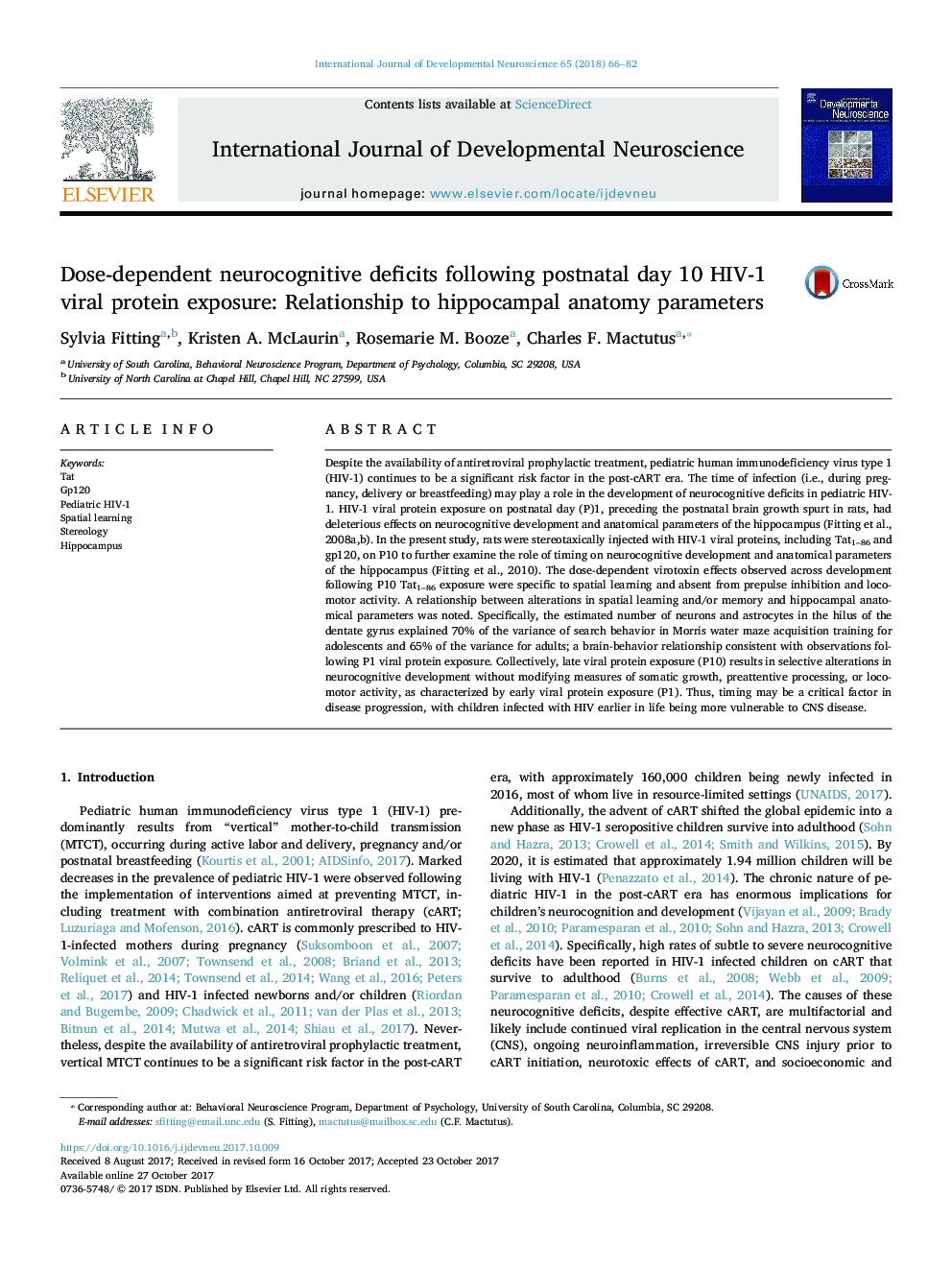| کد مقاله | کد نشریه | سال انتشار | مقاله انگلیسی | نسخه تمام متن |
|---|---|---|---|---|
| 8626131 | 1568365 | 2018 | 17 صفحه PDF | دانلود رایگان |
عنوان انگلیسی مقاله ISI
Dose-dependent neurocognitive deficits following postnatal day 10 HIV-1 viral protein exposure: Relationship to hippocampal anatomy parameters
دانلود مقاله + سفارش ترجمه
دانلود مقاله ISI انگلیسی
رایگان برای ایرانیان
کلمات کلیدی
موضوعات مرتبط
علوم زیستی و بیوفناوری
بیوشیمی، ژنتیک و زیست شناسی مولکولی
زیست شناسی تکاملی
پیش نمایش صفحه اول مقاله

چکیده انگلیسی
Despite the availability of antiretroviral prophylactic treatment, pediatric human immunodeficiency virus type 1 (HIV-1) continues to be a significant risk factor in the post-cART era. The time of infection (i.e., during pregnancy, delivery or breastfeeding) may play a role in the development of neurocognitive deficits in pediatric HIV-1. HIV-1 viral protein exposure on postnatal day (P)1, preceding the postnatal brain growth spurt in rats, had deleterious effects on neurocognitive development and anatomical parameters of the hippocampus (Fitting et al., 2008a,b). In the present study, rats were stereotaxically injected with HIV-1 viral proteins, including Tat1-86 and gp120, on P10 to further examine the role of timing on neurocognitive development and anatomical parameters of the hippocampus (Fitting et al., 2010). The dose-dependent virotoxin effects observed across development following P10 Tat1-86 exposure were specific to spatial learning and absent from prepulse inhibition and locomotor activity. A relationship between alterations in spatial learning and/or memory and hippocampal anatomical parameters was noted. Specifically, the estimated number of neurons and astrocytes in the hilus of the dentate gyrus explained 70% of the variance of search behavior in Morris water maze acquisition training for adolescents and 65% of the variance for adults; a brain-behavior relationship consistent with observations following P1 viral protein exposure. Collectively, late viral protein exposure (P10) results in selective alterations in neurocognitive development without modifying measures of somatic growth, preattentive processing, or locomotor activity, as characterized by early viral protein exposure (P1). Thus, timing may be a critical factor in disease progression, with children infected with HIV earlier in life being more vulnerable to CNS disease.
ناشر
Database: Elsevier - ScienceDirect (ساینس دایرکت)
Journal: International Journal of Developmental Neuroscience - Volume 65, April 2018, Pages 66-82
Journal: International Journal of Developmental Neuroscience - Volume 65, April 2018, Pages 66-82
نویسندگان
Sylvia Fitting, Kristen A. McLaurin, Rosemarie M. Booze, Charles F. Mactutus,